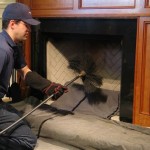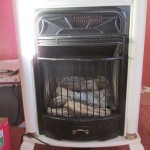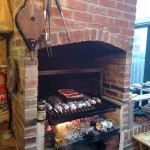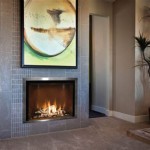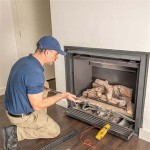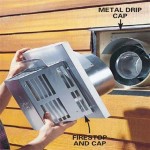Gas Log Fireplace Repair: Troubleshooting and Maintenance
Gas log fireplaces offer the ambiance of a traditional wood-burning fireplace without the hassle of sourcing, storing, and burning wood. However, like any mechanical system, they require regular maintenance and occasional repair. Understanding common issues, troubleshooting techniques, and when to call a professional are essential for ensuring the safe and efficient operation of a gas log fireplace.
This article provides a comprehensive guide to gas log fireplace repair, covering various aspects from initial diagnostics to specific troubleshooting steps. It outlines the importance of regular maintenance and safety precautions that homeowners should take. Furthermore, it emphasizes instances where professional intervention is necessary to guarantee safety and proper functionality.
Identifying Common Gas Log Fireplace Problems
Before attempting any repairs, it's crucial to accurately diagnose the problem. Several common issues can affect gas log fireplaces, each with distinct symptoms. Recognizing these symptoms is the first step toward a successful repair.
One frequent problem is the pilot light failing to stay lit. This can manifest as the pilot light igniting briefly but then extinguishing once the control knob is released. Potential causes include a dirty pilot assembly, a faulty thermocouple, or a problem with the gas valve. A persistent issue with the pilot light can render the entire fireplace unusable.
Another common issue is the burner failing to ignite. The pilot light might be working properly, but the main burner refuses to ignite when the fireplace is switched on. This problem could stem from a blocked burner port, a malfunctioning gas valve, or an issue with the igniter itself. Careful inspection of the burner and related components is necessary.
Yellow or sooty flames are a significant indicator of incomplete combustion. Ideally, gas log fireplaces should produce clean, blue flames. Yellow flames indicate a lack of oxygen or an excess of fuel, leading to the formation of soot and carbon monoxide. This situation poses both a fire hazard and a health risk and requires immediate attention. The cause could be related to inappropriate gas-to-air mixture or a blocked vent.
Unusual odors, especially the smell of gas, are a serious safety concern. A gas odor indicates a potential leak in the gas line or connections. In such cases, it's imperative to immediately turn off the gas supply, ventilate the area, and contact a qualified gas professional. Attempting to operate the fireplace with a gas leak is extremely dangerous.
Finally, a buildup of soot or debris around the burner and logs can also lead to performance issues. Over time, dust, lint, and other debris can accumulate, obstructing the burner ports and affecting the flame pattern. Regular cleaning is essential to prevent this buildup and maintain optimal performance.
Step-by-Step Troubleshooting Guide
Once a problem has been identified, a systematic approach to troubleshooting is necessary. This involves a series of steps designed to isolate the cause of the issue and determine the appropriate course of action. Always prioritize safety and exercise caution when working with gas appliances.
The first step is to visually inspect the fireplace and its components. Examine the logs, burner, pilot assembly, and gas connections for any signs of damage, wear, or blockages. Look for loose connections, corroded parts, or debris accumulation. A thorough visual inspection can often reveal obvious causes of the problem.
If the pilot light is not staying lit, begin by cleaning the pilot assembly. Use a small brush or compressed air to remove any dirt or debris from the pilot orifice. A clogged orifice can restrict the flow of gas to the pilot light, causing it to extinguish. Refer to the manufacturer's instructions for specific cleaning procedures.
Next, check the thermocouple or thermopile. The thermocouple is a safety device that senses the heat from the pilot light and allows the gas valve to remain open. If the thermocouple is faulty, it will not generate enough voltage to keep the gas valve open, causing the pilot light to extinguish. Use a multimeter to test the thermocouple's output voltage. If the voltage is below the specified range, the thermocouple needs replacement.
If the burner is not igniting, check the igniter. The igniter is responsible for creating a spark to ignite the gas. Test the igniter by pressing the ignition button or switch. If there is no spark, the igniter may be faulty and require replacement. Also, ensure the igniter is properly positioned near the burner.
For yellow or sooty flames, check the air shutter. The air shutter controls the amount of air that mixes with the gas. Adjust the air shutter to increase the airflow and improve combustion. A small adjustment can often eliminate yellow flames. Additionally, ensure the fireplace vent is clear and unobstructed.
If a gas odor is present, immediately turn off the gas supply to the fireplace at the shutoff valve. Use a soap and water solution to check for leaks at the gas connections. Apply the solution to the connections and look for bubbles. If bubbles appear, there is a gas leak. Contact a qualified gas professional to repair the leak.
If the troubleshooting steps do not resolve the issue, or if you are uncomfortable performing any of the repairs, it's best to seek professional assistance. Attempting to repair a gas appliance without proper knowledge and experience can be dangerous.
Essential Maintenance Practices for Gas Log Fireplaces
Regular maintenance is crucial for preventing problems and ensuring the safe and efficient operation of a gas log fireplace. A proactive approach to maintenance can extend the life of your fireplace and minimize the need for costly repairs.
Annual cleaning is essential. At least once a year, preferably before the start of the heating season, thoroughly clean the fireplace. This includes removing the logs, cleaning the burner, and vacuuming the firebox. Pay particular attention to removing any dust, lint, or debris that may have accumulated. A clean fireplace operates more efficiently and safely.
Inspect the logs for damage. Over time, gas logs can crack or crumble due to exposure to heat. Replace damaged logs to maintain the proper flame pattern and prevent potential hazards. Ensure that the logs are properly positioned according to the manufacturer's instructions.
Check the burner ports for blockages. Use a small wire or needle to clear any debris from the burner ports. Blocked ports can cause uneven flames and incomplete combustion. Maintaining clear burner ports is essential for optimal performance.
Inspect the gas connections for leaks. Regularly check the gas connections for leaks using a soap and water solution. Early detection of gas leaks can prevent serious accidents. If any leaks are detected, contact a qualified gas professional immediately.
Schedule a professional inspection. It's recommended to have a qualified gas technician inspect your gas log fireplace at least once every two years. A professional inspection can identify potential problems that may not be apparent to the homeowner. A professional can also perform necessary maintenance and repairs to ensure the safe and efficient operation of the fireplace.
By implementing these maintenance practices, homeowners can significantly reduce the risk of problems and extend the life of their gas log fireplaces. Regular maintenance is a small investment that can save time, money, and potential hazards in the long run.

Why Is It Important To Get My Gas Fireplace Logs Clean Regularly

Reasons Your Gas Fireplace Isn T Working Experts

Gas Fireplace Insert Repair Install Princeton Service

How Much Maintenance Does A Gas Fireplace Need

Gas Log Maintenance Is Important Royal Oak Mi Fireside Hearth

Gas Fireplace Keeps Shutting Off Here S What You Can Do

Best Fireplace Insert Repair Installs Ton Service

Fireplace Maintenance For Wood And Gas Fireplaces Sierra Hearth Home

Gas Fireplace Repair Services Maryland Nova Dc

Gas Fireplace Service Log Maintenance
Related Posts


